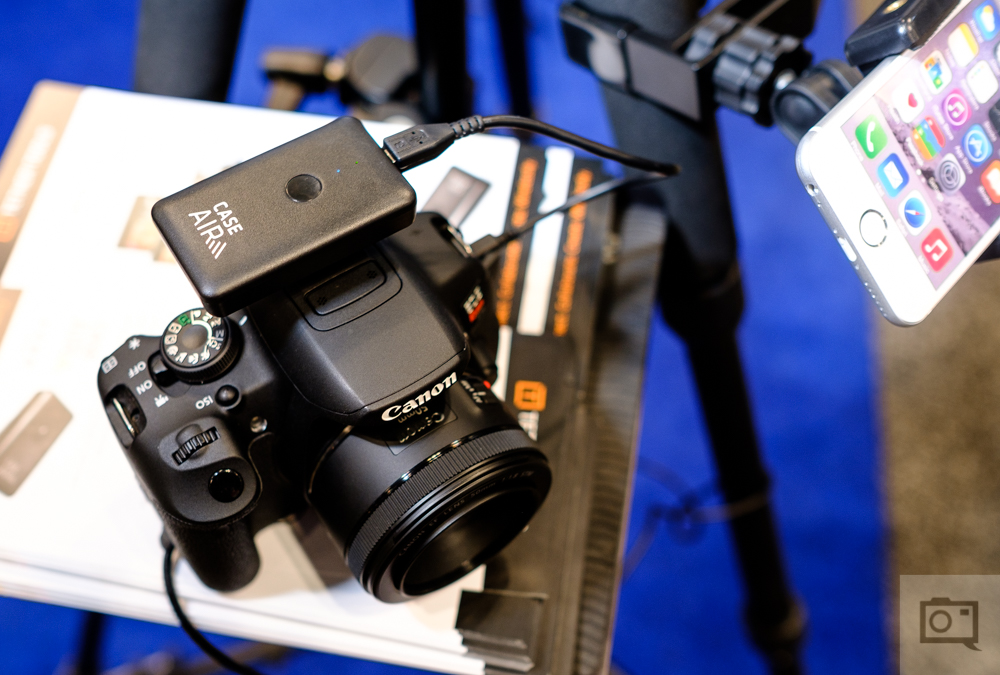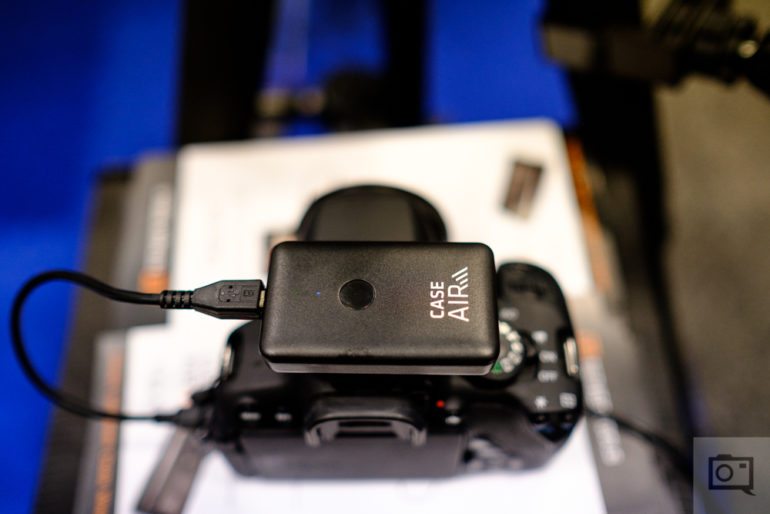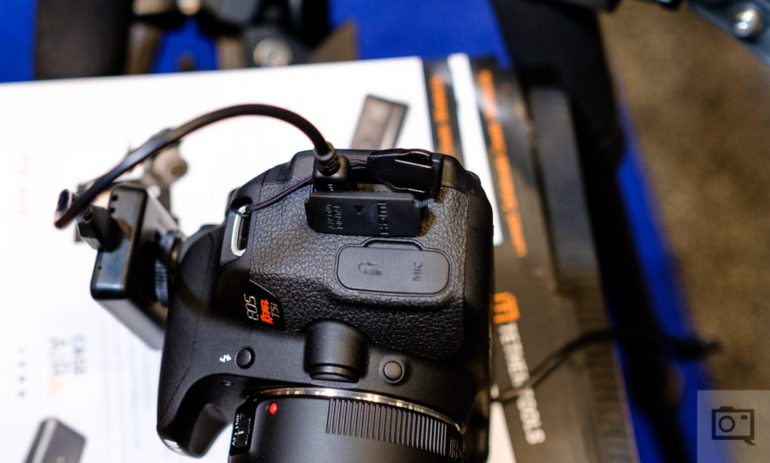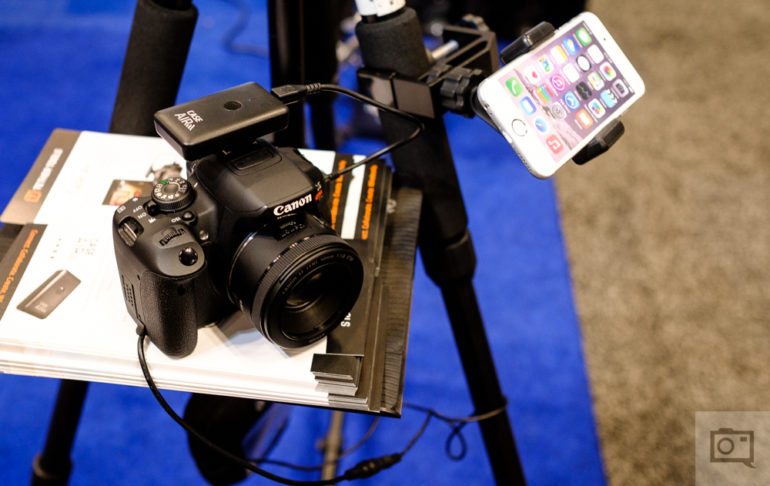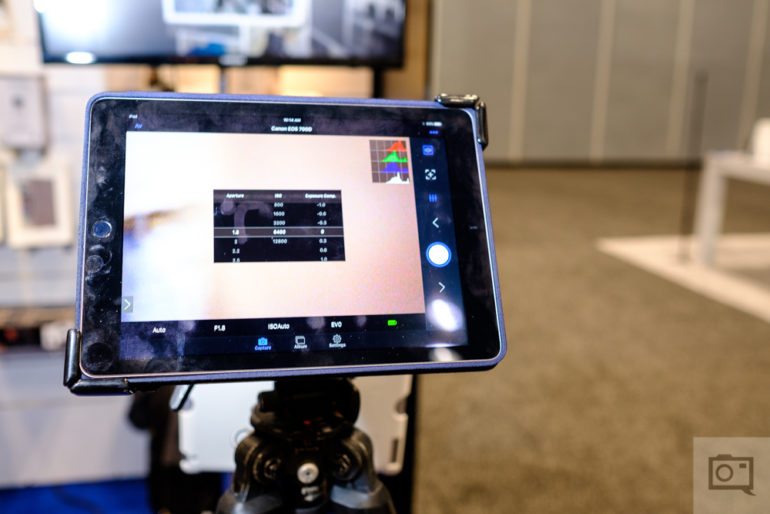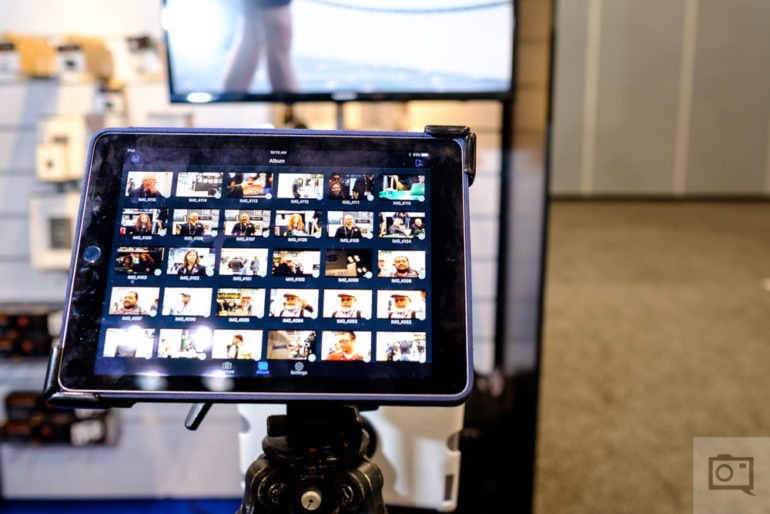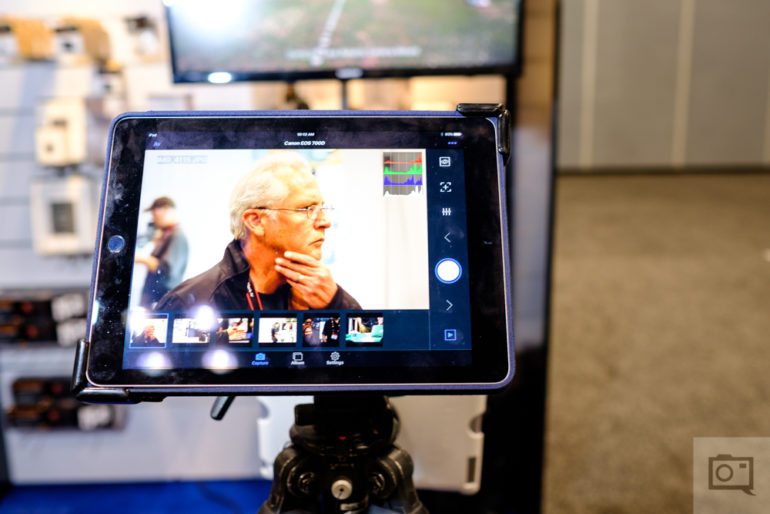The wireless tethering options available on the market haven’t been many over the years; but the new Tether Tools Case Air dongle is looking to change that and do it at an affordable price. Where you’d pay an arm and a leg for a Nikon or Canon accessory (or in some cases use the company’s software with something like a Canon 6D), Tether Tools is looking to do it all at your computer, from your phone, or from a tablet while also saving the battery power in your camera.
If you’re a serious studio shooter, the new Tether Tools Case Air will most likely be one of the more important things to pay attention to.
Tech Specs
Specs taken from the Tether Tools website
- Size: 2.64” (67.25mm) x 1.6” (40.11mm) x 0.55” (13.99mm)
- Weight: 1.76 ounces (50 grams)
- CPU: 400Mhz MIPS
- RAM: 64M DDR2
- WiFi: 802.11 b/g/n
- Distance: 150 feet (45m)
- Battery life: 6 hours
Ergonomics
The Tether Tools Case Air is a small box that goes into your camera’s hot shoe, or can be mounted onto the bottom via the tripod socket. There is a little indicator light that tells you when it’s on. This keeps it relatively compact and easy to store in your camera bag when not in use.
It connects to your camera via a USB cord. At the moment, it will only work with Canon and Nikon DSLRs.
Build Quality
The Case Air itself is pretty small and fairly solid. It isn’t billed as being weather sealed and it surely does connect your camera via the USB port. Using the wireless transmission features, you can send images to your computer, tablet, or phone with relative ease.
Wireless shooting is generally much better. When tethered via a long cable, it’s bound to work but then you need to consider the fact that your cable is also bound to become disconnected from the camera. What this has done for me is fully fried SD cards where I can’t use them anymore. What I’d really love is a solution that makes the Case Air connect to the camera on the side.
But then again, I have yet to put this to the test in a studio setting.
Ease of Use
Tether tools developed their own app and program for the Case Air. Using this program you can control parameters like the camera’s exposure, focusing, triggering, etc.
When you shoot the images, they’ll be transferred over to the the Tether Tools servers from what I understand. This is where I actually really like the idea, especially when working mobile. You’ll then get the chance to download an image from the camera to your device. It can send JPEGs or RAWs; but during our demo it was only sending small JPEGs due to the fact that the Javits Center has pretty abysmal WiFi.
Of course, you also get the option of viewing the images at a larger size overall.
First Impressions
So far, I’m liking what Tether Tools is offering. The idea of putting images in the cloud and then downloading them works well with WiFi. If you’re using a desktop or laptop though, you’ll obviously prefer to send them to your computer. It just makes sense.
What this also seems to offer is a much simpler ease of use vs Canon and Nikon’s offerings–both of which aren’t so simple to set up overall. Another addition that could be incorporated though is Bluetooth.
The Tether Tools Case Air looks pretty cool so far; but I’m going to need to call one in for review to give my final verdict.


